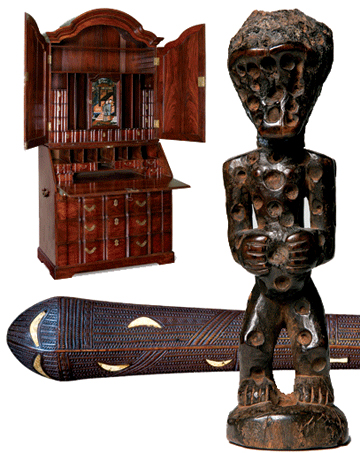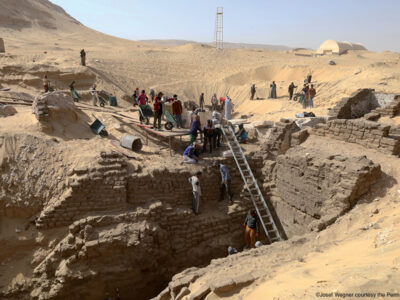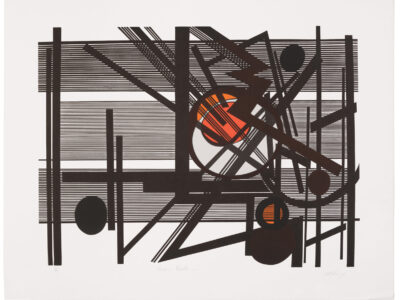
It was a sumptuous spectacle: For three days in late October, 54 antique and fine-art dealers—marshaled by the Women’s Committee of the Penn Museum of Archaeology and Anthropology—transformed the rotunda and adjacent galleries of the campus landmark into an opulent bazaar, showcasing an array of art, furniture, jewelry, and textiles. Organized to benefit the museum’s educational programs, the exhibition and sale, entitled “Treasures … from the Silk Road to the Santa Fe Trail,” marked an important addition to the American art and antique-show circuit.
These weren’t garden variety antiques, however; there were no tea tables, no samplers. But anyone looking to pick up a smallpox fetish or a giant humanoid spoon would not have left disappointed.
At the gala opening preview, an enthusiastic crowd—some dressed in suitably exotic attire—explored the displays to the strains of a live sitar. There was plenty to marvel at: At their most Occidental, the offerings included export pieces manufactured for the European and American markets, such as an 18th-century China Trade block-front secretaire; or Western pieces inspired by foreign cultures, like some 19th-century French jewelry incorporating ancient Egyptian motifs. But, appropriate to the venue, the majority of items came from Asia, Africa, and Oceania. Notable were a collection of 18th- and 19th-century Chinese court clothing made of richly embroidered silk; a series of enigmatic 12th-century Coptic processional crosses; a formidable Tongan war club inlaid with ivory; and a group of exquisitely detailed Native American dolls.
The “Treasures” show is the latest in a long series of Women’s Committee endeavors to stimulate interest in the museum and its collections. Founded in 1937 by wives and relatives of the museum’s board of managers, the committee works unobtrusively but doggedly. Over the years, they’ve helped sort the museum’s vast holdings, furnished a conservation laboratory, established a volunteer guides program, founded the Museum Café, and mounted a number of successful exhibits. Their stewardship even extends to the flower arrangements in the vestibules.
According to “Treasures” co-chair Susan Catherwood, there was little debate in determining what the focus of the show would be. “We wanted to present objects from the wonderful cultures our curators and faculty have been researching for more than a hundred years—and many of the cultures our own collections revolve around,” she explained. “While it’s an event we’ve been contemplating for more than 20 years, the show itself was at least a year and a half in the actual planning.”
When it came time to realize their idea, the committee enlisted Caskey-Lees, a California-based production company, to solicit the dealers—some of whom traveled from places as far-flung as Senegal and Turkey to participate. In the spirit of the museum, known for its strong stance in favor of ethical archaeology—and in adherence to a UNESCO mandate prohibiting the sale of looted antiquities—an expert rigorously investigated the dealers and the provenance of their merchandise beforehand.
Day Two of the exhibition featured a lecture by haute-couture designer and honorary “Treasures” chair Mary McFadden, entitled “Symbols, Goddesses, and Ancient Textiles.” McFadden—who draws inspiration from the clothing and textiles of antiquity, the Orient, and various tribal cultures—presented six models dressed in her designs, alongside images of the historical sources on which the clothes were based. Afterwards, the fine-boned designer and textile scholar, who wore a muted silk sari, signed copies of her book, High Priestess of High Fashion.
By the end of Day Three, it had become clear to everyone on the Women’s Committee that their idea had been a success. “The show and sale obviously resonated with the public,” said Catherwood, “and we were able to present the museum with a check for $100,000 for its outreach programs, including Japan Day, Chinese New Year, and Maya Weekend.” Next year’s show will coincide with Homecoming Weekend, and the Women’s Committee expects an even greater turnout.
—David Perrelli C’01




